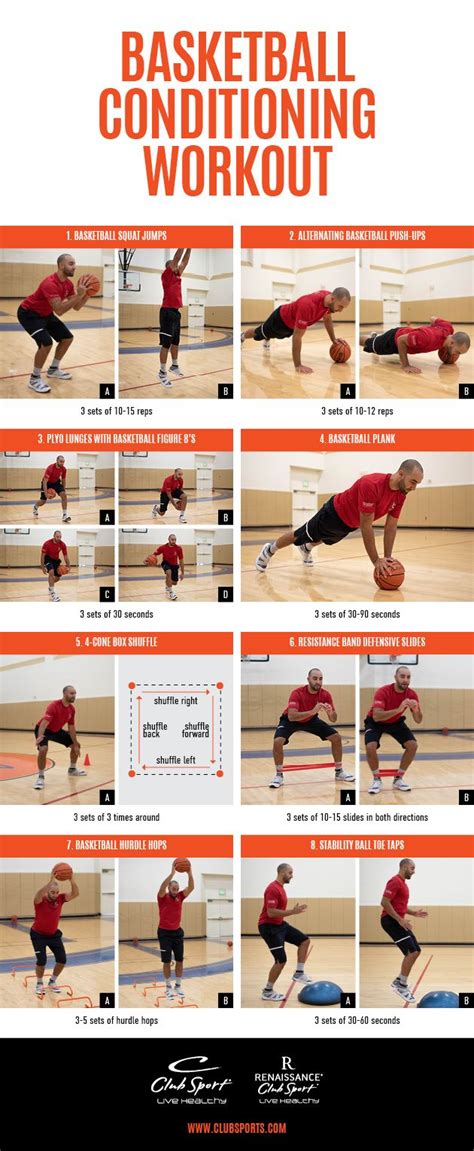Basketball Conditioning for Peak Performance: A Comprehensive Guide
Basketball demands a unique blend of speed, agility, endurance, and strength. Simply having talent isn't enough; peak performance requires rigorous and strategic conditioning. This guide delves into the essential components of a basketball conditioning program designed to elevate your game to the next level. We'll cover everything from foundational fitness to specialized drills, ensuring you're prepared for the demands of the court.
What are the Key Components of Basketball Conditioning?
Effective basketball conditioning isn't about one-size-fits-all workouts. It's a holistic approach targeting several key areas:
- Cardiovascular Endurance: The ability to sustain intense activity for extended periods is crucial. Think sprints down the court, defensive rotations, and fast breaks.
- Strength Training: Developing both upper and lower body strength is essential for shooting, rebounding, and post play. Strength translates to power on the court.
- Agility and Quickness: Basketball requires rapid changes in direction, quick bursts of speed, and explosive movements.
- Flexibility and Mobility: Improved flexibility reduces the risk of injury and enhances performance by optimizing range of motion.
How Can I Improve My Cardiovascular Endurance for Basketball?
Improving your cardiovascular endurance is paramount. Here are some effective methods:
- Interval Training: Alternate high-intensity bursts with periods of rest or low-intensity activity. Examples include sprints followed by jogging, or suicides (sprinting from baseline to half-court and back).
- Continuous Training: Sustained activity at a moderate intensity for a longer duration, like a long distance run or a cycling session.
- Game-Specific Drills: Simulate game situations with drills that involve continuous running and changes of pace. Examples include full-court scrimmages or fast-break drills.
What are some good interval training exercises for basketball?
Interval training is highly effective for basketball conditioning because it mirrors the game's stop-and-go nature. A sample workout could involve:
- 8 x 400m sprints: Sprint 400 meters at maximum effort, followed by a 2-minute recovery jog.
- 10 x 100m sprints: Sprint 100 meters, then recover with 1-minute rest or light jogging.
- Shuttle runs: Repeated sprints across a designated distance, like 10-yard or 20-yard shuttles.
Remember to adjust the intensity and recovery periods based on your fitness level.
What Strength Training Exercises are Best for Basketball?
Strength training complements cardiovascular work, improving power, explosiveness, and injury prevention. Focus on compound exercises that work multiple muscle groups simultaneously:
- Squats: Build lower body strength essential for jumping, rebounding, and quick changes of direction.
- Lunges: Enhance leg strength and balance.
- Deadlifts: Strengthen the posterior chain (back, glutes, hamstrings), crucial for power and stability.
- Bench Press: Develop upper body strength for shooting and passing.
- Overhead Press: Improves shoulder strength and stability for shooting.
What are some plyometrics for basketball?
Plyometrics are exercises that utilize explosive movements to enhance power and agility. Examples perfect for basketball players include:
- Box Jumps: Jumping onto a box to improve explosive power.
- Depth Jumps: Dropping from a slightly elevated position and immediately jumping upwards.
- Lateral Bounds: Jumping sideways to improve lateral agility.
- Jump Squats: Combining a squat with an explosive jump.
These exercises should be incorporated progressively, starting with lower heights and fewer repetitions to avoid injury.
How Can I Improve My Agility and Quickness on the Court?
Agility and quickness are vital for success in basketball. These drills can enhance your court awareness:
- Cone Drills: Weaving through cones to improve footwork and agility.
- Ladder Drills: Using an agility ladder to improve foot speed and coordination.
- Shuffle Drills: Moving laterally to improve lateral quickness.
- Figure-Eight Drills: Moving in a figure-eight pattern to improve agility and change of direction.
How Important is Flexibility and Mobility for Basketball?
Flexibility and mobility prevent injuries and improve performance. Regular stretching is crucial:
- Dynamic Stretching: Active movements like arm circles, leg swings, and torso twists, performed before activity.
- Static Stretching: Holding a stretch for a period of time, done after activity.
- Yoga and Pilates: These practices improve flexibility, balance, and core strength.
What is a Sample Weekly Conditioning Program?
A sample weekly conditioning program could include:
- Monday: Strength Training (Upper Body)
- Tuesday: Cardio (Interval Training)
- Wednesday: Agility and Quickness Drills
- Thursday: Rest or Active Recovery (light jog, stretching)
- Friday: Strength Training (Lower Body)
- Saturday: Cardio (Continuous Training or Game Simulation)
- Sunday: Rest or Flexibility and Mobility Work
Remember: This is a sample program; adjust it to your fitness level and individual needs. Consult with a healthcare professional or certified trainer before starting any new workout routine. Consistent effort and smart training are the keys to achieving peak performance on the basketball court.

